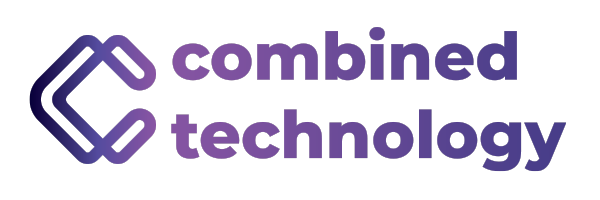Technology is the backbone of modern businesses, powering everything from cybersecurity to seamless remote and hybrid work. However, IT management comes at a cost, and choosing the right support model can significantly impact your bottom line. Companies typically have two options: Managed IT Services and Break/Fix IT Support. But which approach saves you more money in the long run? Let’s break down the key differences, costs, and financial impact of each model.
What Is Break/Fix IT?
The Break/Fix IT model follows a reactive approach—businesses only call for IT support when something breaks. Under this model, companies pay for IT services on an as-needed basis, typically at an hourly rate or per project.
Pros of Break/Fix IT:
- Lower upfront costs – No monthly fees; businesses only pay when a problem occurs.
- No long-term contracts – Flexibility to use IT services as needed.
- Control over IT spending – Ideal for businesses with minimal IT needs.
Cons of Break/Fix IT:
- Unpredictable costs – Expenses can be high and unexpected when major issues arise.
- Downtime risks – Repairs can take time, leading to lost productivity and revenue.
- Lack of proactive maintenance – No ongoing system monitoring, leaving businesses vulnerable to cyber threats and hardware failures.
- Inconsistent service – IT providers may not be familiar with your business, leading to slower resolution times.
What Is Managed IT?
The Managed IT Services model takes a proactive approach by offering ongoing IT support, system monitoring, and maintenance for a fixed monthly fee. Businesses partner with a Managed Service Provider (MSP) to handle all their IT needs, from cybersecurity to cloud management. Learn more about the benefits, costs, and importance of Managed IT Services here.
Pros of Managed IT:
- Predictable monthly costs – Businesses pay a fixed fee, making budgeting easier.
- 24/7 monitoring and support – Proactive issue detection and resolution prevent major disruptions.
- Reduced downtime – Regular maintenance and security updates keep systems running smoothly.
- Enhanced cybersecurity – MSPs implement firewalls, threat monitoring, and compliance measures.
- Scalability – Managed IT adapts to business growth without unexpected costs.
Cons of Managed IT:
- Monthly fees – Requires an ongoing investment, regardless of issue frequency.
- Less flexibility – Businesses commit to a contract, though services are usually customizable.
Service Duration and Disruption
One of the major differences between Break/Fix IT and Managed IT Services is the duration of service and the level of disruption businesses may experience. Since Break/Fix IT operates on a reactive model, the resolution time for issues can vary significantly depending on availability and complexity. This can result in longer downtimes and operational disruptions. Managed IT, on the other hand, proactively monitors systems to prevent issues before they arise, ensuring minimal disruptions and quicker resolution times.
Key Differences in Service Duration and Disruption:
- Break/Fix IT:
- Issues are addressed only when they occur, leading to unpredictable service times.
- No proactive monitoring, increasing the likelihood of extended downtime.
- Businesses must wait for a technician’s availability, potentially delaying critical fixes.
- Managed IT:
- Continuous monitoring detects and resolves issues before they impact business operations.
- Predictable service response times with 24/7 IT support.
- Reduces downtime and ensures consistent system performance.
For businesses that rely on uptime and seamless IT operations, Managed IT Services provide a more reliable solution with less disruption and faster issue resolution.
Uncertain about which IT service model fits your business best?
Our team is here to help you navigate the options and answer all your questions so you can make the best decision for your business. Get in touch for a free assessment today!
Cost Structures
One of the biggest differences between Break/Fix IT and Managed IT Services is their cost structures. Break/Fix IT follows a pay-as-you-go model, leading to unpredictable expenses that vary based on issue severity and frequency. In contrast, Managed IT Services operate on a fixed monthly fee, offering consistent and predictable costs.
Break/Fix IT Cost Structure:
- Hourly or per-incident charges – Costs depend on the complexity and duration of the issue.
- No ongoing maintenance – Repairs and updates are only performed when something breaks.
- Unplanned expenses – Emergency fixes, extended downtime, and cybersecurity breaches can lead to high unexpected costs.
Managed IT Cost Structure:
- Fixed monthly fee – Covers IT monitoring, maintenance, and proactive issue resolution.
- Predictable expenses – Businesses can budget IT costs more effectively.
- Reduced long-term costs – Preventive care minimizes expensive downtime and emergency repairs.
While Break/Fix IT may seem cost-effective upfront, businesses often face higher expenses in the long run due to system failures, data breaches, and prolonged downtimes. Managed IT Services provide financial stability and prevent costly disruptions.
Which IT Model Saves More Money?
While Break/Fix IT might seem cost-effective at first, businesses often face expensive emergency repairs, downtime losses, and security breaches. On the other hand, Managed IT Services prevent problems before they happen, offering cost stability and minimizing downtime-related losses.
Who Should Choose Break/Fix IT?
- Small businesses with minimal IT reliance.
- Companies that rarely experience IT issues.
- Organizations that can tolerate downtime and security risks.
Who Should Choose Managed IT?
- Businesses that rely on continuous uptime and security.
- Companies with remote/hybrid workforces requiring IT support.
- Organizations that want predictable IT expenses and growth scalability.
- Industries with compliance requirements (e.g., healthcare, finance).
Transitioning from Break/Fix to Managed IT
Many businesses hesitate to transition from a Break/Fix IT model to Managed IT Services, fearing high costs or operational disruptions. However, a structured onboarding process with the right technology partner ensures a smooth shift while minimizing risks and maximizing benefits.
Key Steps in the Transition Process:
- Assess Current IT Needs – Identify recurring issues, downtime costs, and security vulnerabilities under the break/fix model.
- Choose the Right Managed IT Provider – Work with a provider that understands your industry and offers customizable solutions.
- Implement a Structured Onboarding Process – A managed IT partner will guide the migration, ensuring minimal disruptions.
- Optimize Support Processes – Transition IT support from a reactive model to proactive monitoring and prevention.
- Evaluate Cost Savings & Performance – Measure the long-term financial and operational benefits of proactive IT support.
Challenges and How to Overcome Them:
- Initial Investment: Managed IT may have upfront costs, but these are offset by reduced downtime and emergency expenses.
- Adjusting to New Processes: Employees may require brief training, but an experienced IT partner ensures a seamless transition.
- Finding the Right Fit: Not all MSPs offer the same services—choosing a provider with scalable solutions is crucial for business growth.
By transitioning to Managed IT, businesses shift from unpredictable IT spending to a model that prioritizes security, efficiency, and long-term savings.
Final Verdict: Managed IT Wins in Long-Term Savings
While Break/Fix IT may seem like a cost-saving approach initially, businesses that experience frequent IT issues, security threats, or downtime will likely spend more over time. Managed IT Services offer predictable expenses, proactive maintenance, and scalability, ultimately saving businesses money in the long run.
If you’re ready to switch to a cost-effective, reliable IT solution, Combined Technology in Tulsa, Oklahoma can help. Contact us today to explore how our services can support your business growth and security.
Get in Touch with Us

Safeguard Your Business with Tulsa's Top Managed IT Provider
At Combined Technology, we provide a flexible, tailored approach to meet your evolving IT needs. Safeguard your business against emerging threats with our expert-managed IT services and customized cybersecurity solutions.





